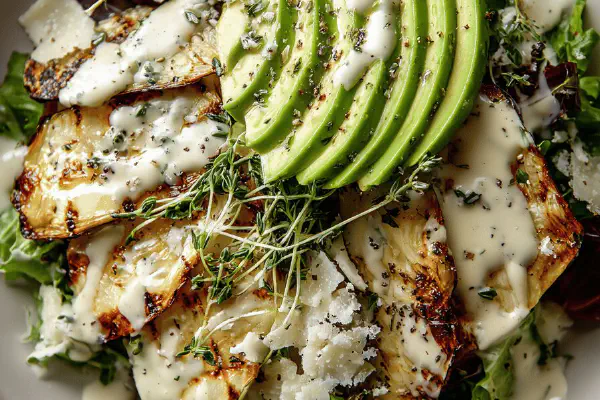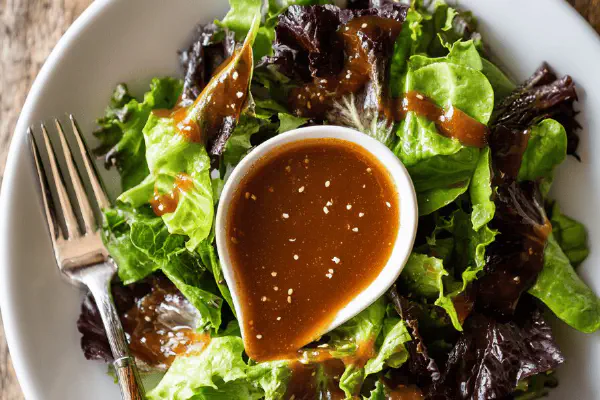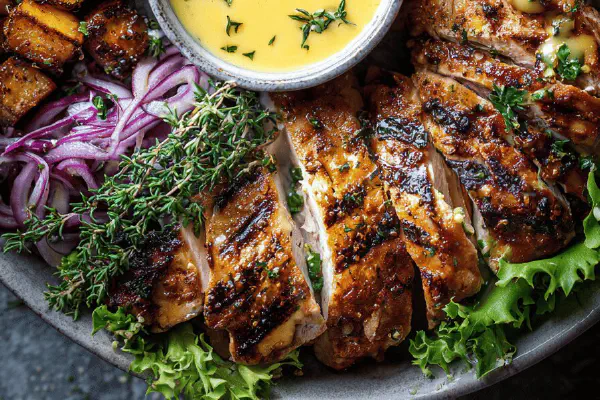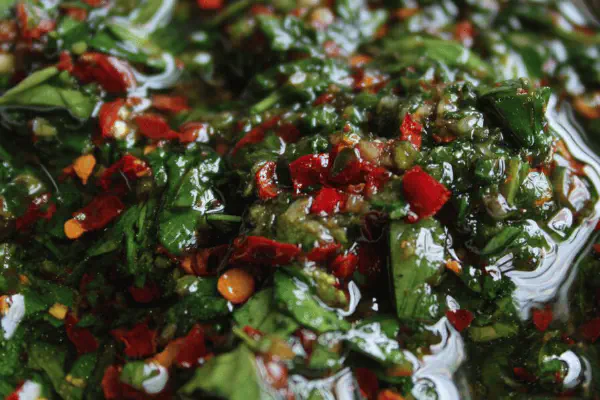Featured Recipe
Herb Avocado Dressing
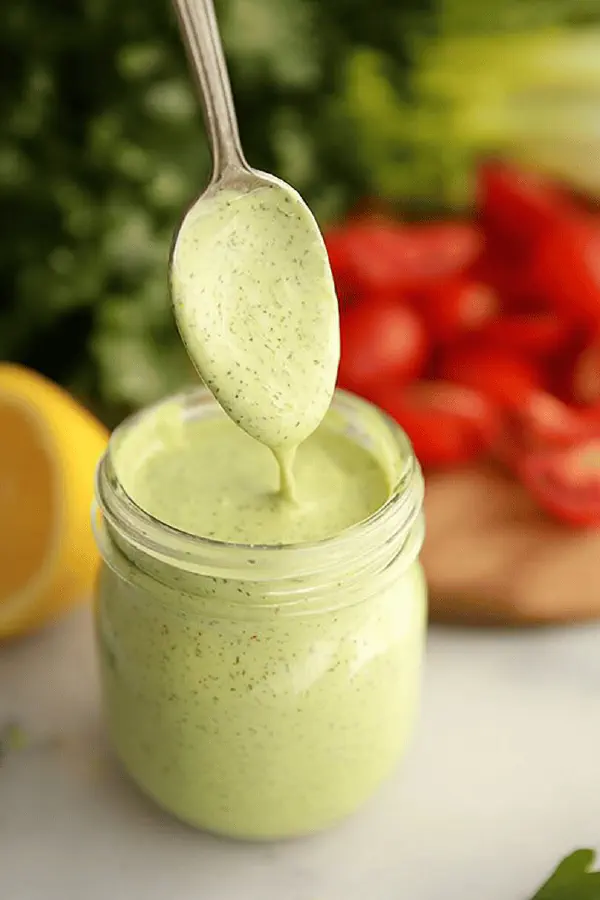
By Kate
"
A vibrant green dressing combining creamy avocado and fresh herbs, thick yet pourable, bursting with bright herbal notes. Uses substituted mayo for richer texture and lemon juice for a sharper acidity. Parsley replaces chives, adding earthiness, while cilantro adds vibrant color and complexity. Garlic and anchovy paste bring umami depth; Dijon mustard introduces slight heat and emulsification. Chill to let flavors marry. Pungent aroma hints at its boldness. Smooth, luscious texture contrasts crisp greens. Adjust salt carefully; over-salting kills herbs’ brightness. Store cold, use within a week, ideal for salads, grilled veggies, or as dip.
"
Prep:
25 min
Cook:
0 min
Total:
30 min
Serves:
14 servings
dressing
avocado
herbs
salad
dip
Introduction
Creamy dressing options with fresh herbs rarely match this punch. The whole point is layers—the ripe avocado gives luscious body; parsley swaps in for chives to give a deeper herbaceous tone; cilantro brightens the palette. Anchovy paste—don’t skip. It slips in that unidentifiable umami hit that holds it all together. The olive oil’s gradual incorporation is not just for texture but to coax everything into a stable emulsion.
Skip the store-bought thick mayo; instead, Greek yogurt or even hummus anchors the base, cutting calories and boosting tang. This gets especially nice after a chill hour—flavors fuse and mellow, yet still keep the zip. Watch the texture closely; too thin means you added the oil too fast or didn’t blend long enough.
Ideal for salads that need a herbaceous backbone or as a dip for grilled veggies. The aroma alone—the punch of garlic tempered by fresh herbs—sets expectations loud. Salt balances that but adds weight, so add gradually. Here’s the tested approach to avoid watering down or over-seasoning. This isn’t just a dressing—it’s a tool for making greens pop.
Ingredients
About the ingredients
Swapping mayonnaise for Greek yogurt or hummus shrinks fat without losing creaminess. Greek yogurt makes dressing tangier, hummus adds nuttiness; either requires blending for smooth finish. Parsley provides a more grounded flavor than chives, and cilantro offers a fresh brightness though can be swapped with basil if preferred. Anchovy paste or minced anchovies introduce umami depth that rounds out the dressing without fishiness. Lemon juice sharpens acidity better than vinegar here due to its fragrant lift. Kosher salt is key; avoid table salt as it’s too fine and easily oversalts. Olive oil quality matters—use cold-pressed, fruity varieties. Garlic cloves smashed raw infuse pungency that mellows after chilling, so adjust if you want less bite. Mustard acts as emulsifier, ensuring dressing doesn’t separate quickly.
Method
Technique Tips
Using a food processor or blender helps avoid lumps and maintains proper texture; pulse in short bursts instead of running machine nonstop to prevent overheating and breaking herbs down too fine, which can cause bitterness. Scraping bowl sides is not optional—it ensures even mixing and avoids clumps. Slow olive oil drizzle is crucial to build an emulsion; fast addition results in breaking, oil pooling. Taste repeatedly toward end of blending. Salt and pepper can’t just be guessed—too much salt flattens herb brightness, too little leaves dressing bland. Cover and chill minimum one hour; time allows flavors to meld and garlic’s raw sharpness to soften. Give dressing a stir or gentle shake before serving to reincorporate any oil separation. Leftovers separate normally; safely reheated only if used warm in other dishes.
Chef's Notes
- 💡 For easy blending use ripe avocados; they mash easier. Substituting Greek yogurt or hummus can lighten the dressing.
- 💡 Keep a close eye while blending; it may take a few short pulses. Ensure both herbs are finely chopped.
- 💡 Adjust salt at the end carefully. Too much salt can mute bright flavors; try carefully adding it bit by bit.
- 💡 If no processor, mash avocado well first. Use mortar and pestle for garlic—mix in herbs manually.
- 💡 Oil should be drizzled slowly. Fast pouring can create an unstable emulsion—don’t rush this step.
Kitchen Wisdom
How to prevent dressing from separating?
Shake gently before use. Keep cold; emulsification weakens if sits too long.
Can I use different herbs?
Yes, but adjust flavors. Basil gives sweetness; mint may clash. Test small batches first.
What’s the best way to store leftovers?
Airtight container in the fridge can last 5–7 days. Just mix if separation occurs.
How to rescue a too-thin dressing?
Add more avocado or blend in chia seeds—thickens nicely without changing flavor.
